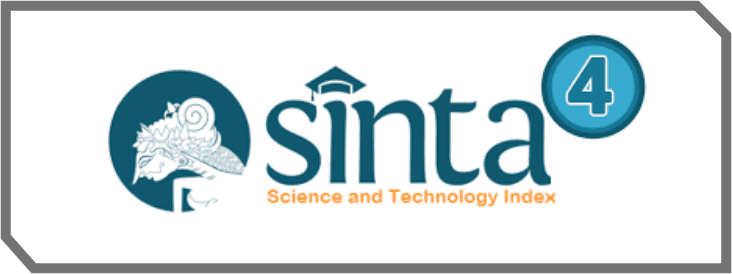Seni dalam Ruang Imaji : Mediasi Digital dan Perubahan Format Pertunjukan pada Taman Budaya Aceh Selama Pandemi
DOI:
https://doi.org/10.55606/jurrsendem.v4i2.6948Keywords:
Audience Participation, Cultural Archive, Digitalization, Mediatization, Performing ArtsAbstract
The COVID-19 pandemic triggered a significant transformation of performing arts in Aceh, particularly through Taman Budaya Aceh, which shifted its stage activities into digital formats. This study aims to describe the processes of digital mediation, changes in production formats, audience engagement patterns, and the archival function of cultural performances through Taman Budaya Aceh’s official YouTube channel. Using a qualitative descriptive case study design, the research analyzed 12 performance videos produced and uploaded between 2020–2022 through visual and narrative analysis. The findings reveal three key aspects: first, the shift from offline to online production created a new aesthetic based on camera work and editing; second, audiences transformed into mediatized participants through comments, likes, and replays; third, digital platforms functioned as cultural repositories, expanding access and strengthening the preservation of performances. These findings highlight that digitalization of performing arts is not merely an emergency response, but an integral part of constructing a sustainable arts ecosystem in the digital disruption era.
Downloads
References
Alvarado, M., & Walsh, D. (2022). Performing arts in transition: Digital mediation in Latin America. Performance Research, 27(1), 45–59.
Auslander, P. (1999). Liveness: Performance in a mediatized culture. Routledge.
Badaruddin, S. (2023). The developments of performing arts technology in Indonesia. Irama: Jurnal Seni, Desain dan Pembelajarannya, 5(1), 1–8. https://doi.org/10.17509/irama.v5i1.55684
Chen, Y. (2020). Digitizing Chinese opera: Challenges and opportunities. Journal of Contemporary Theatre Studies, 10(3), 77–94.
Creswell, J. W. (2016). Research design: Qualitative, quantitative, and mixed methods approaches (4th ed.). Sage.
Dwiyana Habsary, K., Kurniawan, A., & Bulan, I. (2021). Digitalization of arts. In Proceedings of the International Conference on Language and Arts (ICLA 2021) (pp. 246–250). Atlantis Press. https://doi.org/10.2991/assehr.k.211129.039
Faurizkha, S., & Cahyono, A. (2025). Respon Generasi Z terhadap pertunjukan wayang orang: Tinjauan sistematis konteks budaya digital masa kini. ARTED: Jurnal Ilmiah Seni dan Pendidikan Seni, 1(1), 37–52.
Fiske, J. (1989). Understanding popular culture. Routledge.
Hylland, O. M. (2022). Cultural policy and the digital turn in performing arts. International Journal of Cultural Policy, 28(3), 289–307.
Jenkins, H. (2006). Convergence culture: Where old and new media collide. NYU Press.
Krippendorff, K. (2004). Content analysis: An introduction to its methodology. Sage.
Lim, S. (2021). Mediatization and live streaming of traditional performances during COVID-19 in Southeast Asia. Asian Theatre Journal, 38(2), 212–230.
Manovich, L. (2001). The language of new media. MIT Press.
Perera, S. (2022). Memory and archives in digital performing arts. Theatre Journal, 74(4), 356–372.
Rismayanti, I., Sutrisno, E., & Lestari, D. (2022). Virtual performances as spaces of solidarity during the pandemic. Jurnal Seni Pertunjukan Indonesia, 14(2), 115–130.
Santoso, D., & Putri, A. (2021). Performing arts and YouTube: Audience engagement during pandemic. Jurnal Komunikasi Indonesia, 9(2), 55–72.
Sari, M., & Prabowo, T. (2023). Digital transformation of wayang kulit performance: Case study of Java. Wacana Seni, 22(1), 101–120.
Sovhyra, T. (2023). The problem of introduction of digital technologies in the modern performing arts. Journal on Computing and Cultural Heritage, 16(3), 1–8. https://doi.org/10.1145/3587169
Sugita, I. W., & Pastika, I. G. T. (2021). Inovasi seni pertunjukan drama gong pada era digital. Mudra: Jurnal Seni Budaya, 36(3), 342–349.
Szabó, V., & Zámborszky, Á. (2021). Online theatre audiences during COVID-19: Patterns of digital participation. International Journal of Performance Arts and Digital Media, 17(2), 123–140.
Szostak, M., Baran, M., & Ward, J. (2024). Influence of digitalization on musical arts consumers’ behaviours during the COVID-19 pandemic: Art management from a generational perspective. Humanities and Social Sciences Research Journal, 31(2), 157–177. https://doi.org/10.7862/rz.2024.hss.26
Tongaria, M., & Mathur, K. (2024). A review study on the impact of digital art on freelance art in India. ShodhKosh: Journal of Visual and Performing Arts, 5(ICETDA24), 383–392. https://doi.org/10.29121/shodhkosh.v5.iICETDA24.2024.2030
van Dijck, J. (2016). Mediated memories in the digital age. Stanford University Press.
Wijaya, H., & Nugroho, R. (2024). Online gamelan performance and diaspora communities. Ethnomusicology Forum, 33(1), 88–105.
Zaini, H., & Fitria, L. (2023). Performing arts on TikTok: Youth creativity in pandemic Indonesia. Jurnal Kajian Budaya, 15(1), 12–29.
Downloads
Published
How to Cite
Issue
Section
License
Copyright (c) 2025 Jurnal Riset Rumpun Seni, Desain dan Media

This work is licensed under a Creative Commons Attribution-ShareAlike 4.0 International License.







